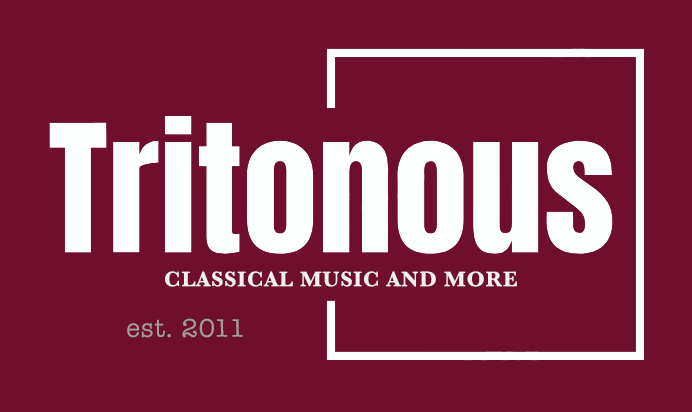The Miro Quartet has been around since 1995, and astonishingly, 3 out of the 4 original members are still part of the group today. (The current 2nd violinist joined them in 2011). They haven’t made many recordings over the years, but two are especially memorable. Their 2003 recording of George Crumb’s Black Angels (part of the “Complete George Crumb Edition” on Bridge Records) is surely the most successful – musically and technically – I have heard on CD. It is simply awesome. And so is their complete set of Beethoven quartets – which Pentatone compiled from various sources, recorded over a 15-year period (2004-2019), and reissued in a terrific box set on their own label in 2019.
This new disc is, curiously, a local radio production (recorded at an Austin classical radio station) which Pentatone is distributing on CD with their logo – not unlike their recent Bartok Piano Concertos CD which was recorded by the local San Francisco Symphony team. It is an innovative and attractive program featuring two commissions – from Kevin Puts and Caroline Shaw.
The Puts work, “Home”, is cast in 3 continuous sections, the first of which is melancholy and full of anguish – made more so by the frequent use of rolled quadruple-stopped chords, exaggerated for maximum dramatic and emotional effect. The 2nd section lightens instantly, glistening with harmonic motifs over rugged rhythmic pulses. The music becomes quite dissonant along the way (perhaps a little too deliberately) before leading into the final section, marked “dangerously fast”. This is rather more minimalistic in origin – attractively so – and doesn’t sound especially “dangerous” or even all the fast. However, it establishes a more unique voice, including some wild glissandos and intense ¼-tone outbursts, which is quite engaging. There are some achingly expressive passages in the violins too, and the piece closes with some more elongated, multi-stopped chordal sighs similar to those heard in the first movement. This is an effective and interesting piece, if ultimately not really memorable.
A bigger disappointment comes with the new Caroline Shaw work, whose music typically brings something fresh and novel. But here we’re confronted with spoken dialogue in the form of short poems read before each section of music (7 in all). A female voice (which is not identified anywhere in the production – not in the booklet, front or back covers, or in the recording details) recites these poems before the music begins. I personally never like spoken word as part of a music program in any circumstance, but it is especially intrusive and annoying here because nothing prepares you for it. No “narrator” is named in the credits, and nowhere is it revealed that recited poems are a part of the piece. (Even the program notes are vague about it.) Worst of all, they are not individually tracked, so it’s impossible to skip over them and just get to the music.
The poem readings are mercifully short (and so are the bits of music which follow them) but are made even more annoying as spoken in a florid, up-close sotto voce. And the music itself isn’t all that interesting. It’s not as creative or imaginative as we have come to expect from Shaw. Oh, she employs all the identifying characteristics from her usual bag of tricks – bow scratchings, portamentos, quarter-tones, tonal harmonies coming out of noisy effects, etc. – so we definitely know it’s her. But there just isn’t enough musical substance to it.
I found it interesting reading the Miro Quartet’s comments in the booklet that they had Zoom meetings with the composer during which they made “suggestions” – and at one point had to ask her to take out her violin and demonstrate for them some “unique string technique” she specifies in the score so they could understand what it was she was asking for.
At some point, enough is enough with it. Just write good music.
The most satisfying piece on the program is surely George Walker‘s Adagio from his 1st String Quartet (more familiarly known as Lyric for Strings in its version for string orchestra). It is beautifully played here, and how I wish they had played the entire quartet rather than Barber’s. The catalog could really use a new recording of the complete work.
Their reading of the Barber Quartet is arduous – certainly not one I will ever return to again. I found it a little cool and detached, with slowish tempos in all three movements – extraordinarily so in the famous Adagio, which has so little forward momentum it sounds positively stuck in cement. And lacks intensity. And when the big climax finally arrives, we hear some emotive, melodramatic, accented impulses which just don’t sound right. To illustrate just how seriously slow this Adagio is, the Miros take almost 3 minutes longer (!) than the Emersons (DG) and Yings (Sono Luminus), and over a minute longer than the very leisurely Escher Quartet on BIS. I hate to be cliche, but watching paint dry is a more interesting way to spend 10 minutes.
Coming after the Molto Allegro/Presto conclusion of the Barber (which isn’t molto or presto, by the way), the program inexplicably ends with an arrangement of “Over the Rainbow” for no conceivable or musically justifiable reason. Why they put it there is beyond comprehension. It is a lovely thing – exquisitely intimate and lovingly played – but so absurdly out of place here at the end of the concert.
Pentatone has long since abandoned their dedication to state-of-the-art DSD/SACD recorded sound (which is what put them on the map in the first place), and this release is a standard stereo CD which isn’t even recorded by them. Considering the source, the sound is quite good – though I thought the group sounded a bit “confined” at times, and the acoustic could become a bit congested and dense in the more intense moments. A little more air and spaciousness would have been beneficial.
Pentatone continues in strange directions, as evidenced by many of their recent releases. This one has potential – accomplished playing, some good music and interesting, really attractive cover art. But with all the misgivings noted above, it is far from satisfactory.
This new disc is, curiously, a local radio production (recorded at an Austin classical radio station) which Pentatone is distributing on CD with their logo – not unlike their recent Bartok Piano Concertos CD which was recorded by the local San Francisco Symphony team. It is an innovative and attractive program featuring two commissions – from Kevin Puts and Caroline Shaw.
The Puts work, “Home”, is cast in 3 continuous sections, the first of which is melancholy and full of anguish – made more so by the frequent use of rolled quadruple-stopped chords, exaggerated for maximum dramatic and emotional effect. The 2nd section lightens instantly, glistening with harmonic motifs over rugged rhythmic pulses. The music becomes quite dissonant along the way (perhaps a little too deliberately) before leading into the final section, marked “dangerously fast”. This is rather more minimalistic in origin – attractively so – and doesn’t sound especially “dangerous” or even all the fast. However, it establishes a more unique voice, including some wild glissandos and intense ¼-tone outbursts, which is quite engaging. There are some achingly expressive passages in the violins too, and the piece closes with some more elongated, multi-stopped chordal sighs similar to those heard in the first movement. This is an effective and interesting piece, if ultimately not really memorable.
A bigger disappointment comes with the new Caroline Shaw work, whose music typically brings something fresh and novel. But here we’re confronted with spoken dialogue in the form of short poems read before each section of music (7 in all). A female voice (which is not identified anywhere in the production – not in the booklet, front or back covers, or in the recording details) recites these poems before the music begins. I personally never like spoken word as part of a music program in any circumstance, but it is especially intrusive and annoying here because nothing prepares you for it. No “narrator” is named in the credits, and nowhere is it revealed that recited poems are a part of the piece. (Even the program notes are vague about it.) Worst of all, they are not individually tracked, so it’s impossible to skip over them and just get to the music.
The poem readings are mercifully short (and so are the bits of music which follow them) but are made even more annoying as spoken in a florid, up-close sotto voce. And the music itself isn’t all that interesting. It’s not as creative or imaginative as we have come to expect from Shaw. Oh, she employs all the identifying characteristics from her usual bag of tricks – bow scratchings, portamentos, quarter-tones, tonal harmonies coming out of noisy effects, etc. – so we definitely know it’s her. But there just isn’t enough musical substance to it.
I found it interesting reading the Miro Quartet’s comments in the booklet that they had Zoom meetings with the composer during which they made “suggestions” – and at one point had to ask her to take out her violin and demonstrate for them some “unique string technique” she specifies in the score so they could understand what it was she was asking for.
At some point, enough is enough with it. Just write good music.
The most satisfying piece on the program is surely George Walker‘s Adagio from his 1st String Quartet (more familiarly known as Lyric for Strings in its version for string orchestra). It is beautifully played here, and how I wish they had played the entire quartet rather than Barber’s. The catalog could really use a new recording of the complete work.
Their reading of the Barber Quartet is arduous – certainly not one I will ever return to again. I found it a little cool and detached, with slowish tempos in all three movements – extraordinarily so in the famous Adagio, which has so little forward momentum it sounds positively stuck in cement. And lacks intensity. And when the big climax finally arrives, we hear some emotive, melodramatic, accented impulses which just don’t sound right. To illustrate just how seriously slow this Adagio is, the Miros take almost 3 minutes longer (!) than the Emersons (DG) and Yings (Sono Luminus), and over a minute longer than the very leisurely Escher Quartet on BIS. I hate to be cliche, but watching paint dry is a more interesting way to spend 10 minutes.
Coming after the Molto Allegro/Presto conclusion of the Barber (which isn’t molto or presto, by the way), the program inexplicably ends with an arrangement of “Over the Rainbow” for no conceivable or musically justifiable reason. Why they put it there is beyond comprehension. It is a lovely thing – exquisitely intimate and lovingly played – but so absurdly out of place here at the end of the concert.
Pentatone has long since abandoned their dedication to state-of-the-art DSD/SACD recorded sound (which is what put them on the map in the first place), and this release is a standard stereo CD which isn’t even recorded by them. Considering the source, the sound is quite good – though I thought the group sounded a bit “confined” at times, and the acoustic could become a bit congested and dense in the more intense moments. A little more air and spaciousness would have been beneficial.
Pentatone continues in strange directions, as evidenced by many of their recent releases. This one has potential – accomplished playing, some good music and interesting, really attractive cover art. But with all the misgivings noted above, it is far from satisfactory.








